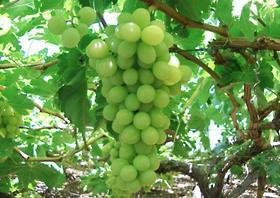
The first South African table grape forecast of the season indicates that if all goes well, the export volume could match the volumes last seen three years ago when 67.5m cartons were exported.
However, it could also be on the same level as last year, when just over 61m cartons of the fruit were shipped.
Industry organisation SATI, in its first forecast, normally indicates upper and lower levels for the campaign, simply because it is very early in the season and much can still happen before the final cartons are shipped.
In all, the forecast indicates a return to normality. This comes at a time when the industry, due to increased international completion, is focusing all its efforts on supplying it customers with only the best quality.
“Increased competition in world markets convinced the industry to refocus all efforts, from vineyard to market, on supplying its discerning markets with only the best quality that the South African table grape growers have become renowned for,” said SATI chairman Fanie Naudé.
“This drive is supported by the latest vine census which reflects the SA table grape industry’s response to market preferences for new varieties that gave rise to accelerated replacement of older generation varieties with new generation varieties,' Naude continued. 'A larger percentage of young vines is currently not bearing or not in full production yet, compared to previous years.'
SATI said that its first crop estimate indicates shipments of between 61.05m and 67.8m cartons (4.5 kg equivalent).
Of this the early growing regions, the Northern region and the Orange River, are expected to contribute between 25m and 27m cartons.
The midseason regions of the Olifants River and Paarl will contribute between 15.6m cartons and nearly 18m cartons.
If all goes well, the late season Hex River Valley could surpass its record crop of 22m cartons, but could also fall short of 20m cartons.
The earliest Northern Provinces Region will start packing at around week 44, while indications are that the Orange River and other regions are likely to start up to one week earlier.
“The Northern region is expected to continue its growth trend of the past few years mainly due to new varieties and plantings coming into full production,' SATI noted.
The Orange River region starts shortly after the northern regions and will have an earlier start to the harvest compared to last year. “The current trend is likely to continue where table grape varieties suitable to be dried, which are not economically viable in the fresh table grapes export markets, will be utilised for raisins.”
Despite enough winter rain and a full dam supplying irrigation water, vineyards in the Olifants River Region are still recovering from the prolonged drought, albeit slowly, hence the modest estimate for this region.
“Although in the Berg River and Hex River regions the crop development has just started, production volumes for the Berg and Hex River Regions are estimated to follow their normal trend.
SATI said the industry, especially in the Western Cape, is aware of the scarcity of water and will continue to manage this resource responsibly while applying the lessons learnt during the drought.



